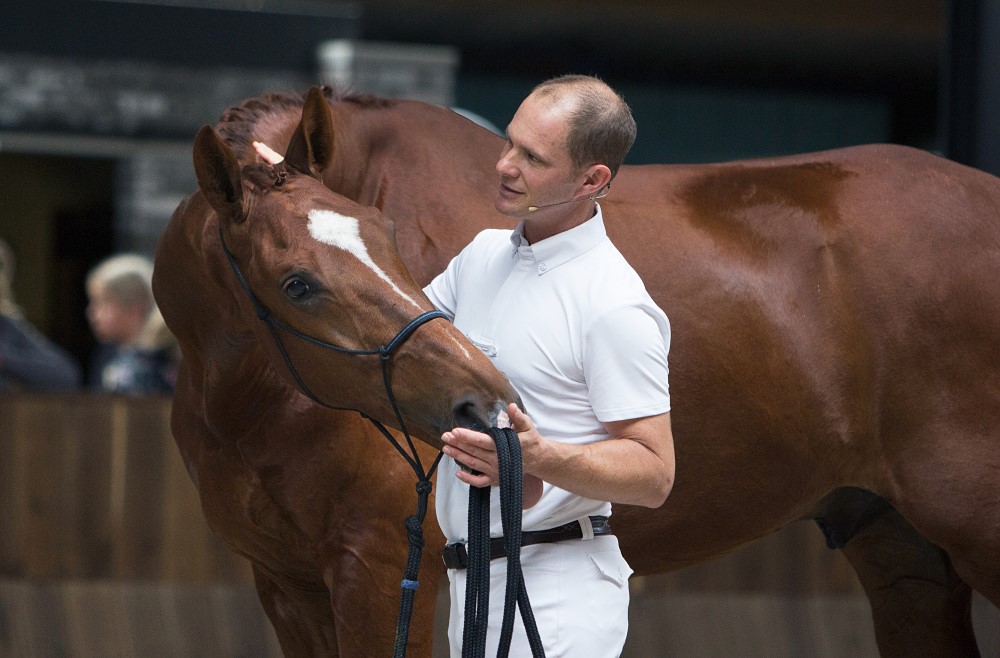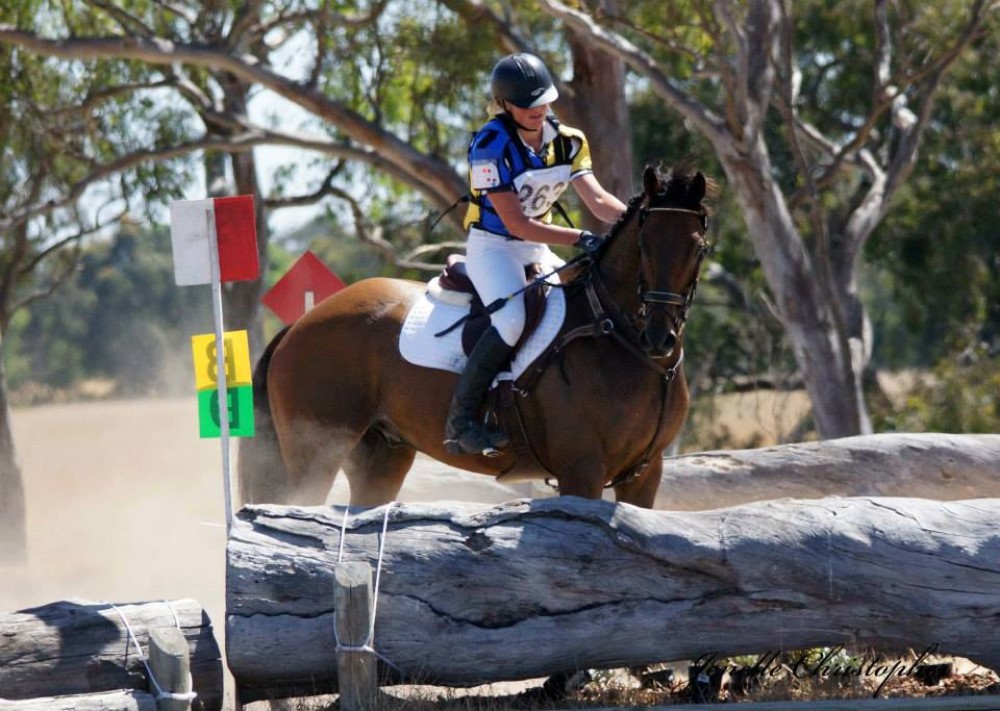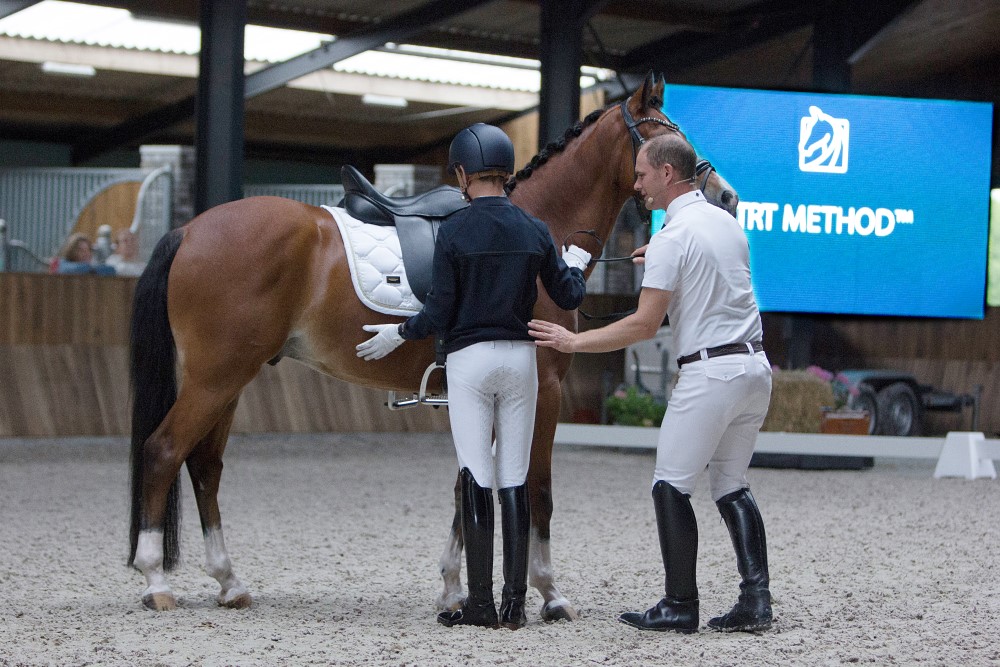Training a horse happens in fits and starts. Sometimes things progress easily and sometimes we hit a roadblock. There are principles that you can come back to when you hit a roadblock.

There are often times, particularly when you are training something new or something difficult, when your horse will not do what you want him to do. Sometimes this will be because he doesn’t understand what it is that you want. Sometimes it will be because it is difficult physically for him and he would prefer not to. Sometimes it may be that he is afraid, for example, going into water. Or it may be that he has pain that is made worse by what you want him to do.
It is NEVER that he is trying to make you mad or late or some other reason to do with having an effect on YOU. He is unable to think about what it is like to be a human. He doesn’t have the part of the brain that we use to empathise, to put ourselves in someone else’s shoes, and imagine what it is like for them.
If you reach an impasse in a training task you have asked a few times and got a poor response from him, it is good to reflect for a moment on what the problem might be. Think about simple things first.
Could it be that he is tired and the difficult question could be best asked again tomorrow when he is less tired? Don’t be afraid to stop. Sometimes discretion is the better part of valour. Especially if it is very hot or if he is young. Just go back to something simpler that he will do so that you can finish off on a good note and you can reward him.
Could it be that he doesn’t understand because you are not being clear enough with your aids? Sometimes, for example, I see riders unintentionally pulling on the rein when they are asking with their leg for the horse to go more forward. The rider might be nervous, or perhaps be using their reins to balance. This can be a problem when asking a horse to canter, jump, or go up and down banks, tasks where the rider might be ambivalent and communicate this to the horse, or lack balance.
In the lateral work I sometimes see riders who are asking the horse to move away from the outside leg (for example in travers) but have their weight to the outside away from the movement. If you have piggybacked a child, you will know that to balance the weight you have to step under the weight. It is the same for the horse. In left travers he is travelling to the left so you must sit to the left even as you use your right leg. Check your position, stretch up from the waist up and stretch down from the waist down. Take care that you are being clear with your aids.

Could it be that he doesn’t understand because it is too big a step that you are taking? Can you make some smaller stepping stones to make a bridge from what he knows to what you want him to learn? Should you remind him of an easier exercise that uses key parts of what you are asking for? Think about the building blocks of what you are doing and go back. For example, for a pirouette first he must slow the canter, so make sure he can canter almost to walk speed. Make sure he can bend and then ask him to turn just a couple of steps. If this is too hard, go back to a walk pirouette to remind him that he can slow and turn at once. Reward each stage. Then ask for the canter pirouette when this is fresh is his mind. Start with a small square so that you ask for two or three steps turning and two or three steps straight. This can become a triangle, and then a small oval with a half pirouette and a few steps straight and another half. Then reward.

Another example: if he gets over-excited about a grid or cavaletti exercise, you can make it simpler by adding one element at a time. Start with one rail, then two, etc. Remember that if he is rushing in, he is probably stressed and lacks confidence, rather than that he is keen. If he rushes, he is more likely to make a mistake and become more frightened, so it becomes self-fulfilling. It is your job to train him in a way that he becomes more confident. If he makes a mistake and loses his confidence (perhaps stopping at a fence), don’t be afraid to make it smaller and easier and build it up again.
Could it be that he is afraid? For example, he may be afraid to go into water. You can start by reminding him about basic go-forward responses. If that doesn’t work, you could get him to get his feet wet by going backwards into it. This way he doesn’t see it, gets his feet wet and then he is likely to realise that it is okay.
Could it be that he doesn’t have the physical ability to do what you ask? He may lack suppleness, strength or balance. You may ask for the same response but ask a lesser amount. Treat it as you would in the gym, slowly building up weights and number of repetitions. For example, in travers ask for less angle, and accept smaller slower steps initially, and gradually ask for more as his suppleness and balance improves.
Could it be that he doesn’t want to cooperate because he has forgotten that the pressure will come off when he does cooperate? Have you forgotten to reward him? It is easy to do this. We go around happy that he is doing what we ask, but because we have our mind on something better, we forget to reward him. Just go back to an easier exercise and remember to reward him. It is taking pressure OFF that trains the horse. Sometimes you must find something to reward. The more you reward the faster he will progress. Think about how you can positively reinforce the behaviour you want. Learn how to use a clicker, make sure you have carrots in your pocket to reward him.

“The more you reward the
faster he will progress.”
Could it be that you have taken pressure off him at the wrong time? For example, you may want him to slow down but as you take with the rein he objects, gets strong and pulls the rein out of your hand. You haven’t meant to reward him for pulling the rein out of your hand, but you did anyway. So, you must make your position stronger. Press down into the stirrups. Sit deep in the saddle. Stretch up and lean back a little. Make sure you hold the reins firmly and then ask again.
Be strong when you need to be strong. Make sure you don’t give in to his pressure. He must give to yours. Be determined. Don’t give up. Don’t release the pressure before he gives to us. Another example is the horse who doesn’t cooperate with a light aid, but protests at a strong aid or the touch of a whip. He might pigroot or nap. The timid rider might remove the pressure, and the horse has effectively trained the rider to not use the whip.

Can you identify which of the basic responses is failing? The basic responses are: both legs mean “go”; both reins mean “stop”; one rein means “turn”; one leg means “yield sideways”. For example, if he is objecting to what you are training by rearing, or threatening to rear, it is a failure of going forward from the leg and you must work on that. You can keep more control by keeping him bent (pressure on one rein), and get him to go forward, or forward and sideways to start with, on a small circle. If he is running past a jump, it is failure of the turning response to the rein and you may have to sharpen this response up away from the fence first. Turn him left and right and soften him up and get him obedient to the rein and then re-present at the jump.
You can see I hope that the general principle underlying these questions is to first take responsibility for your problem. Can you correct how you are applying your aids? Can you analyse the problem? Can you break it into stepping stones? Then think about whether your horse has physical difficulty, is hot or tired, or has pain or just stiffness and difficulty balancing.
Don’t over train the problem. Harry Boldt is quoted to say, “Don’t do it 100 times a day, do it once for 100 days.”
If you are still having trouble, get help. Ask an experienced trainer, have some lessons, or send the horse to someone who can help him achieve what you want.
Sometimes what you want to achieve with your horse isn’t something he can do, and you may need to consider getting one who can do the task and sell yours to someone who wants to do the job that he is good at. For example, a talented and careful jumper just might not be bold enough for higher level eventing but might be a super show jumper, or a willing Thoroughbred might not have the suppleness required for high-level dressage but might be a lovely schoolmaster. The horse and you will both be happier doing what suits. EQ
YOU MIGHT ALSO LIKE TO READ BY KERRY MACK:
A Smarter Way to Compete – Equestrian Life, May 2023
What Motivates Me – Equestrian Life, March 2023
More Than a Walk in the Park – Equestrian Life, February 2023
Scott Keach Makes His Own Luck – Equestrian Life, December 2022
No Room for Bullying in Our Sport – Equestrian Life, November 2022
Avoid the Mud (Play Indoors) – Equestrian Life, October 2022
Why We Love Our Sport – Equestrian Life, September 2022
Getting on the Bit – Equestrian Life, July 2022
Positive Training Really Clicks with Horses – Equestrian Life, June 2022
Learn From Your Mistakes – Equestrian Life, March 2022 issue
Young Horse Classes: A Fun Launching Pad – Equestrian Life, February 2022
Making Sense of all the Bits & Pieces – Equestrian Life, January 2022
The Secret to ‘Soft Hands‘ – Equestrian Life, December 2021
Ask Less, Reward More – Equestrian Life, October 2021
So You Want To Go To The Games? – Equestrian Life, September 2021
The Ins & Outs Of Bitless Bridles – Equestrian Life, July 2021
Taking The Plunge With The Lunge – Equestrian Life, June 2021
Dressage for Showjumpers – Equestrian Life, May 2021
23 Shoulder-In Exercises to Improve Your Horse – Equestrian Life, April 2021
Understanding Your Horse’s Inner Thoughts – Equestrian Life, March 2021
Make the Most of Your Seniority – Equestrian Life, February 2021
Building Better Relationships – Equestrian Life, January 2021
Whipping Up Controversy – Equestrian Life, December 2020
The Importance of a Trusting Relationship – Equestrian Life, November 2020
Welcome to Kindergarten for Foals – Equestrian Life, October 2020
The Carrot or the Liquorice? Positive Reinforcement – Equestrian Life, September 2020
Submission or Stress? Something to Chew On – Equestrian Life, August 2020
A Relaxed Horse is a Happy Horse – Equestrian Life, July 2020
The Literate Horse Rider – Equestrian Life, June 2020
Why Horses Love Ingrid Klimke – Equestrian Life, May 2020

